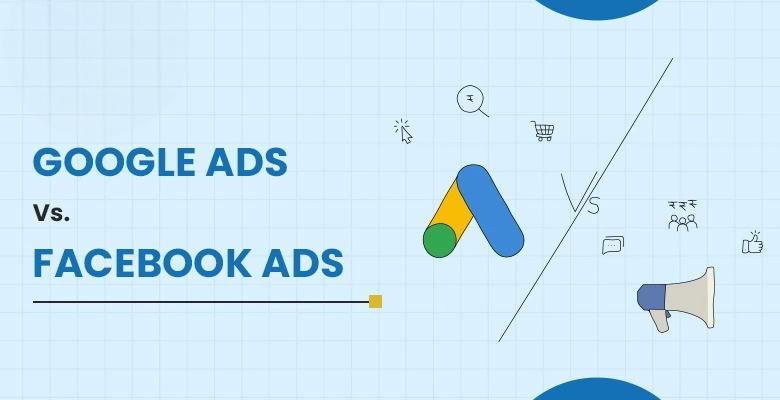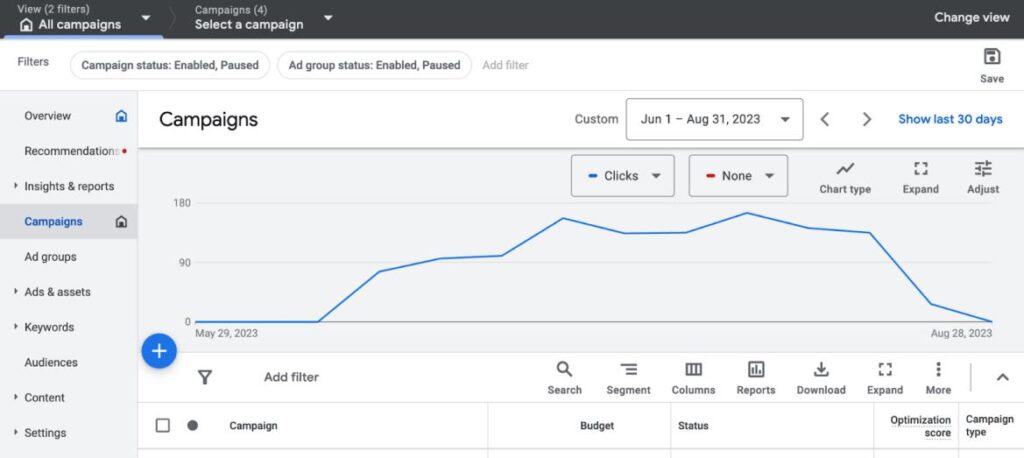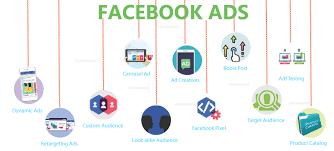
Google vs Facebook Ads has become a critical debate for digital marketers in 2025…
Google vs Facebook Ads is a key comparison that can significantly impact your digital marketing strategy in 2025. While both platforms serve different purposes, they offer powerful reach, advanced targeting options, and multiple ad formats. But which one delivers better ROI? In this article, we’ll break down Google Ads vs Facebook Ads across cost, audience intent, and platform strengths.
For companies trying to reach clients who plan to buy or locate a particular service, this makes it perfect. Facebook, however, is really good at generating demand. To reach potential customers who might not be actively looking but are probably interested in your products, it makes use of user demographic and interest-based targeting.
Understanding the strengths and applications of Google vs Facebook ads is crucial in deciding where to allocate your advertising budget for optimal results.
Table of Contents
- What Are Google Ads?
- What Are Facebook Ads?
- Differences Between Facebook Ads and Google Ads
- Similarities Between Google Ads and Facebook Ads
- Benefits of Facebook Ads
- Benefits of Google Ads
- Factors to Consider When Choosing Facebook or Google Ads
- How to Track Your PPC Results?
- FAQs – Google Ads vs. Facebook Ads
What Are Google Ads?
Google Ads, previously Google Ad Words, is a powerful PPC platform that displays your ads on Google Search, YouTube, and its Display Network. One of the biggest benefits of Google Ads is its ability to target high-intent customers—people actively searching for specific services or products using search terms. This makes it ideal for businesses looking for immediate conversions.
Google Ads offers various ad formats—text, display, shopping, and even video ads—making it perfect for brands targeting different stages of the buying journey. Plus, its performance tracking tools like CTR, CPC, and CPA offer clear insights into ad performance.
Here’s the Google Ads overview dashboard:

The strength of Google Ads lies in its ability to target users actively searching for specific products and services, offering timely ads that match their immediate needs. This makes it highly effective for driving direct traffic and conversions. Businesses can use Google Ads to reach potential customers when they express interest in what the business offers, making it a vital tool for many digital marketing strategies. To learn more about Google Ads and how to optimize them for better results, follow my website now.
What Are Facebook Ads?

Facebook Ads – part of Meta’s advertising ecosystem—focus on interest-based targeting. They help you reach users based on demographics, behaviour, and interests—even if they’re not actively searching. This makes Facebook Ads effective for demand generation and brand awareness.
Key Facebook Ads benefits include eye-catching visuals, detailed audience targeting, seamless integration with Instagram, and retargeting options. With features like Facebook Ads retargeting, you can bring back users who interacted with your site or app.
Differences between Facebook Ads and Google Ads
Google and Facebook Ads comparison, it’s crucial to understand the differences and similarities each platform offers advertisers.
- Targeting Approach:
Google Ads focuses on what people are actively searching for, making it great for reaching users who are already looking for specific products or services. In contrast, Facebook Ads target people based on their age, interests, and online activity, which makes it better for building brand awareness and reaching those who aren’t necessarily searching for something at the moment. - Ad Placement:
Google Ads can show up on search result pages, YouTube, and across websites that are part of Google’s Display Network. Facebook Ads, on the other hand, appear across its own platforms—including Instagram and Messenger—as well as through its Audience Network, which reaches users on other sites and apps. - Intent vs. Interest:
Google Ads are driven by user intent—meaning the ad appears when someone types in a relevant search. Facebook Ads are driven more by user interests, so you can reach people based on what they like or do online, even if they haven’t actively searched for anything yet. - Ad Formats:
Google offers ad types like text ads, shopping ads, and display ads, which are usually more direct and simple. Facebook gives advertisers more creative freedom with options like images, videos, carousels, and interactive content.
Similarities between Google Ads and Facebook Ads
1. Pay-Per-Click Model:
Both Google and Facebook use a pay-per-click system, meaning advertisers are only charged when someone actually clicks on their ad.
2. Massive Audience Reach:
Each platform offers access to a huge audience—billions of users worldwide—giving businesses the opportunity to connect with people across the globe.
3. Smart Analytics:
Both Google Ads and Facebook Ads come with powerful tracking tools like real-time performance insights via Facebook Ads analytics and Google Ads performance tracking that help you see how your campaigns are doing. You can monitor things like click-through rates, conversions, and learn more about who’s engaging with your ads.
4. Built-In Optimization Tools:
They both offer handy tools to improve ad performance, including A/B testing, smart bidding strategies, and options to tweak your campaign based on things like location, time of day, or the type of device being used.
5. Flexible Budget Control:
Advertisers can easily set their spending limits on either platform, whether it’s a daily budget or a total campaign cap-making it suitable for businesses big and small.
In the end, knowing how Google and Facebook Ads compare can help you decide which one (or both) is the right fit for your goals. Whether you’re running a drop shipping store or trying to boost conversions, your choice should be based on what you’re aiming to achieve and who you’re trying to reach.
Benefits of Facebook Ads
Facebook Ads come with several advantages that make them a strong option for businesses looking to advertise online. Here’s a look at what makes them stand out:
1. Detailed Targeting:
Facebook offers advertisers the ability to target people based on a wide range of factors like age, location, interests, and online behaviour. This level of precision makes it easier for businesses to connect with the right audience.
2. Eye-Catching Visuals:
As a platform that thrives on visuals, Facebook supports a range of ad formats—videos, images, carousels, stories, and more. This variety gives brands creative freedom to make their ads more engaging.
3. Strong User Interaction:
Facebook encourages interaction, allowing users to like, comment on, and share ads. This type of engagement can help your ads spread organically and gain more visibility. Also Comments, shares, and likes help drive organic reach.
4. Seamless Integration with Instagram:
Since Facebook owns Instagram, advertisers can run ads on both platforms at the same time. This extends your reach while keeping everything manageable through a single dashboard.
5. Retargeting Features:
Facebook makes it easy to reconnect with people who’ve already visited your website or app. Retargeting helps turn casual visitors into customers by keeping your brand top of mind.
6. In-Depth Analytics:
Facebook provides a wealth of data to help you understand how your ads are doing. You can track performance, measure results, and adjust strategies based on real-time insights.
7. Budget-Friendly:
For many small and mid-sized businesses, when comparing the Google Ads vs. Facebook Ads cost as Facebook offers a more affordable advertising option. You can set your own budget and only pay when someone interacts with your ad.
8. Easy to Use:
Even if you’re new to digital marketing, setting up a Facebook ad campaign is straightforward. The platform walks you through each step—from choosing your audience to selecting ad formats.
9. Mobile Optimization:
With most users accessing Facebook via mobile, the platform ensures that ads are designed to look and work great on smartphones and tablets.
All these features make Facebook Ads a powerful tool, especially when comparing them to Google Ads. Whether your goal is brand awareness, more website visitors, or sales, Facebook offers flexible and effective solutions. To truly master online marketing, it’s wise to learn both platforms—consider enrolling in a full digital marketing course that covers both.
Benefits of Google Ads
Google Ads, formerly Google AdWords, is a go-to platform for businesses wanting to boost their online presence. Here’s what makes it so effective:
1. Reaches High-Intent Customers:
Google Ads shows your ad to users actively searching for products or services like yours, making it easier to attract potential buyers who are ready to take action.
2. Massive Reach:
Thanks to Google’s dominance in search, your ads can reach a global audience. This is great for businesses aiming to grow in new regions or expand their market.
3. Transparent and Measurable:
Google Ads gives you clear insights into how your campaigns are performing. You can track everything from ad views and clicks to conversions like purchases or signups.
4. Flexible Budget Options:
You’re in control of your spending with Google Ads. Whether you’re working with a small daily budget or a large campaign fund, you can adjust your settings to fit your needs.
5. Versatile Ad Formats:
Google offers a variety of ad types—text, shopping, display, and video ads—so you can tailor your campaigns to different goals and audiences.
6. Real-Time Campaign Control:
If something’s not working, you can change it immediately. Google Ads lets you shift budgets, pause ads, or adjust targeting on the fly to keep performance high.
7. Advanced Targeting:
Beyond keywords, you can target users by location, device type, or even based on how they previously interacted with your website. Especially useful in Google Ads vs. Facebook Ads targeting debates. This makes your ad strategy more refined and effective.
These Google Ads benefits help businesses maximize their PPC ROI, especially when users are near the point of purchase.
Facebook Ads vs. Google Ads: Key Factors to Consider
When evaluating Google Ads vs. Facebook Ads cost, the key factors include:
1. Your Marketing Goals:
Use Google Ads if you want to reach people who are actively searching for something. It’s ideal for lead generation and direct sales.
Use Facebook Ads when you want to build awareness or reach people who might be interested in your product—even if they aren’t looking for it yet.
2. Who you’re targeting:
Google Ads targets people based on the keywords they type into search.
Facebook Ads lets you reach people using detailed info like age, location, interests, and behaviour, making it better for targeting specific groups.
3. Budget and Cost:
Facebook Ads often cost less per click and may be better if you’re working with a tight budget.
Google Ads might cost more, but the clicks often come from people ready to take action, giving you potentially higher-value leads.
4. Ad Formats:
Google Ads supports text, shopping, and banner ads.
Facebook Ads gives you creative options like videos, carousels, and interactive content that work well for storytelling and visual branding.
5. User Intent:
Google Ads captures users when they already have a need or want.
Facebook Ads helps you create demand by showing ads to people who might not have been looking for your product in the first place.
6. Performance Tracking:
Both platforms offer excellent analytics.
Google Ads gives data on search behaviour and conversions.
Facebook Ads focuses more on user engagement and audience insights.
7. Flexibility:
Google Ads allows more granular control over bids, schedules, and devices.
Facebook Ads gives you more flexibility in terms of creative formats and audience tweaks.
The best choice depends on your business goals, audience, and budget. In many cases, using both platforms together creates the strongest impact—Google Ads for conversions, Facebook Ads for awareness and engagement.
How to Track Your PPC Campaigns
Tracking and measuring ad performance is essential for maximizing results. Use tools for PPC tracking and follow best practices:
1. Start with Clear Goals:
Know what you’re trying to achieve—whether it’s more sales, signups, or site visits. Your goals will guide which metrics to monitor.
2. Use Built-In Analytics Tools:
Both Google and Facebook provide dashboards with valuable data. Use these to track clicks, impressions, conversions, and more.
3. Set up Conversion Tracking:
Install tracking codes on your website to measure what users do after clicking your ad—like buying something or filling out a form.
4. Watch Key Metrics:
Pay attention to CTR (Click-Through Rate), CPC (Cost per Click), CPA (Cost per Acquisition), and conversion rates. These numbers help you evaluate how well your campaign is performing.
5. Analyse Campaign Performance Often:
Check your data regularly. This helps you understand what’s working and where you need to make adjustments.
6. Test Different Versions
Run A/B tests to see which headlines, images, or calls to action perform best. Use the results to fine-tune your ads.
7. Connect with Google Analytics
Integrate your campaigns with Google Analytics for even deeper insights into how users behave once they land on your site.
8. Keep Optimizing
Use your findings to improve your targeting, bidding, and creative. Constant tweaking is the key to better performance and ROI.
By staying on top of your data and making informed changes, you’ll get better results from your ad spend—and a clearer picture of your audience.
FAQs – Google Ads vs. Facebook Ads in 2025
Q1: Which is better in 2025 – Google Ads or Facebook Ads?
It depends on your goals. If you’re targeting high-intent traffic, go for Google. If you’re looking for low-competition brand growth, choose Facebook.
Q2: What’s the better platform for ROI?
For direct response, Google wins. For brand engagement, Facebook shines. Combining both platforms provides the best ROI.
Q3: Is there a winner for mobile ads?
Both are optimized for mobile, but Facebook’s native mobile experience gives it a slight edge in mobile-first campaigns.
Q4: Who offers better targeting?
In a Google Ads vs. Facebook Ads targeting debate – Google wins on keyword precision, Facebook on behavioral insights.
Final Thoughts
Choosing between Google Ads vs Facebook Ads in 2025 depends on your objectives. Use Google Ads to generate sales through high-intent searchers, and Facebook Ads to build brand awareness and nurture leads through engaging content.
Want to master both? Consider enrolling in a full digital marketing course covering Google Ads vs Facebook Ads comparison, tracking, and platform integrations. In today’s competitive landscape, a hybrid PPC strategy offers the best ROI for modern marketers.